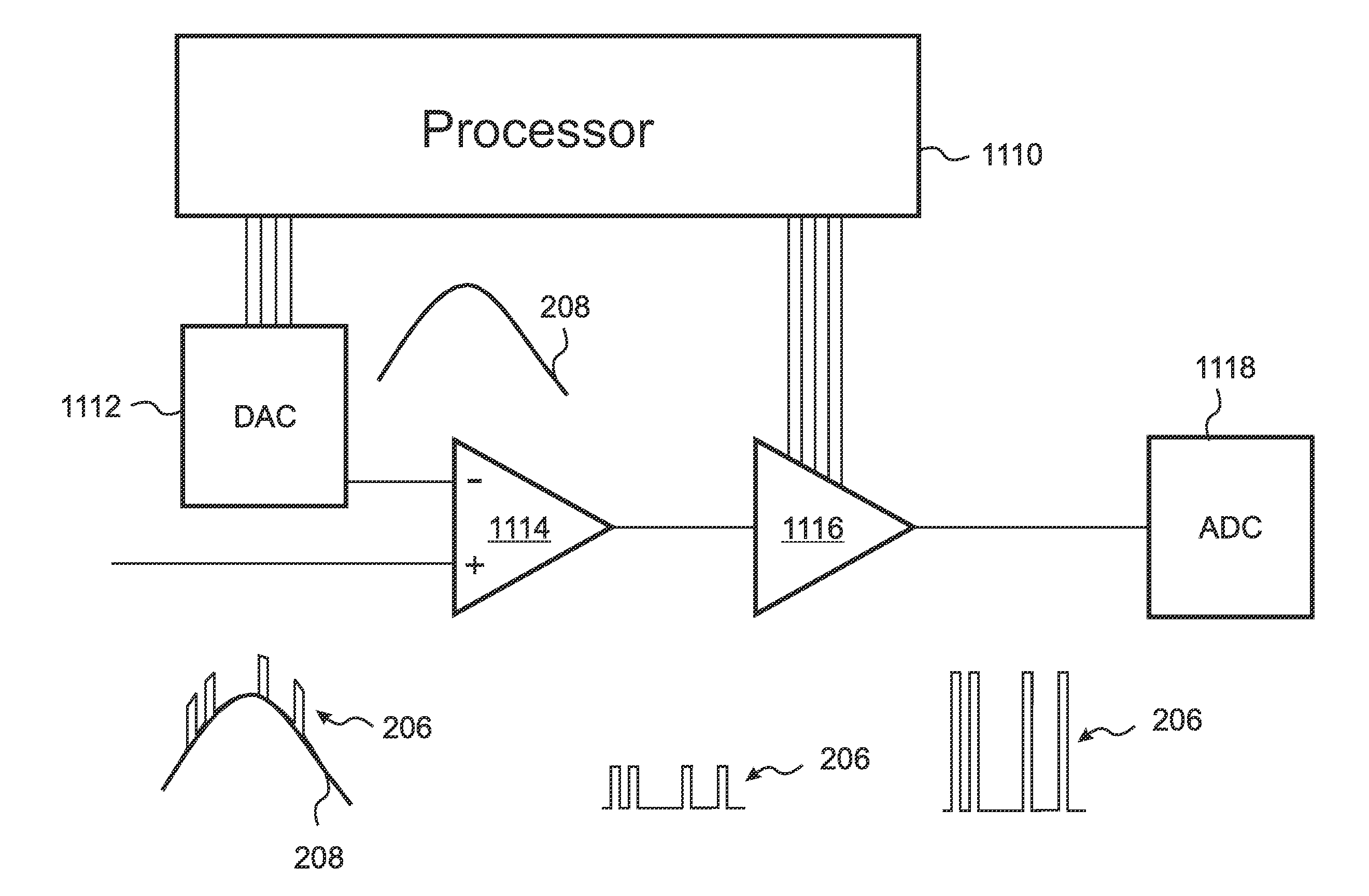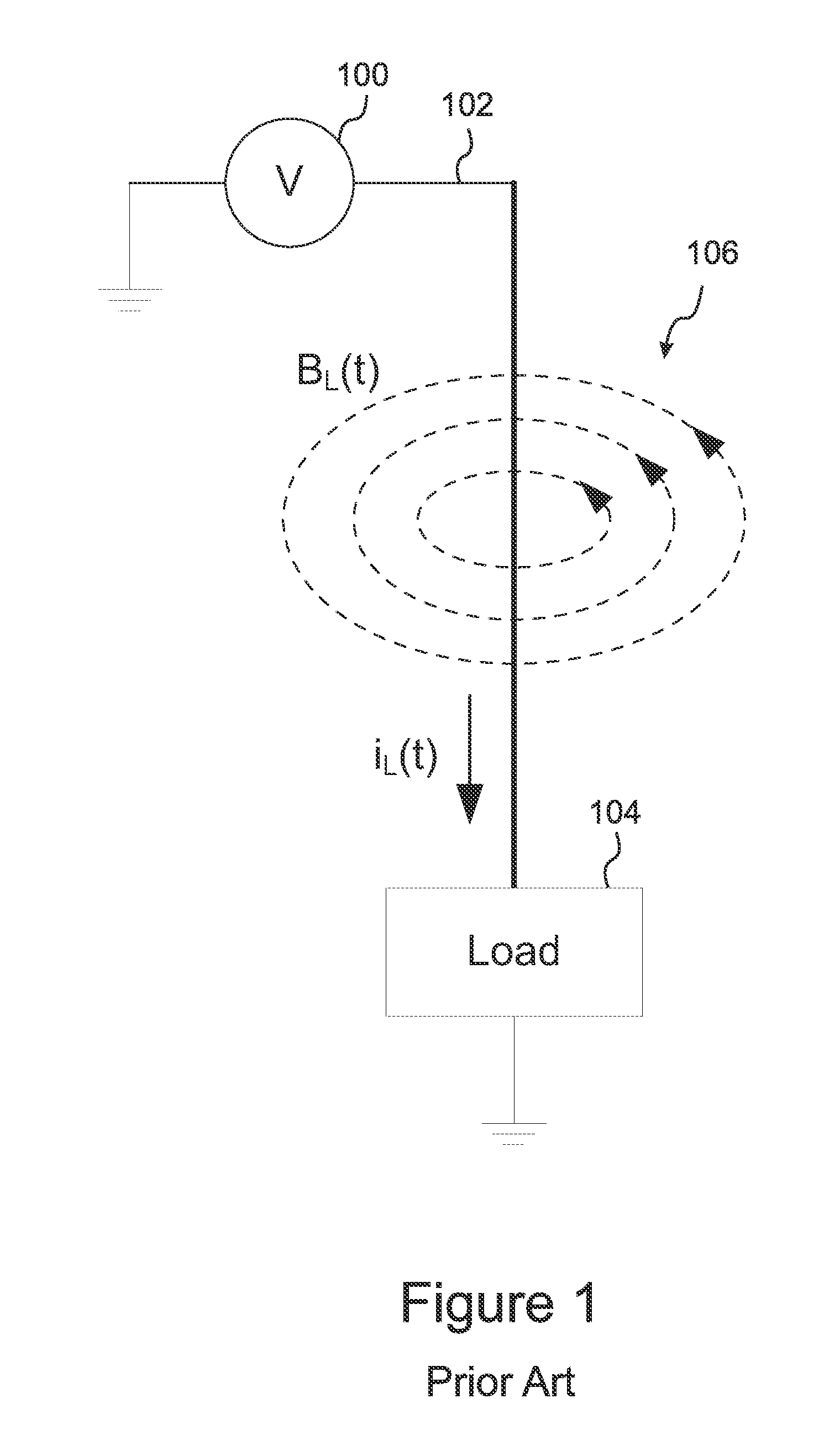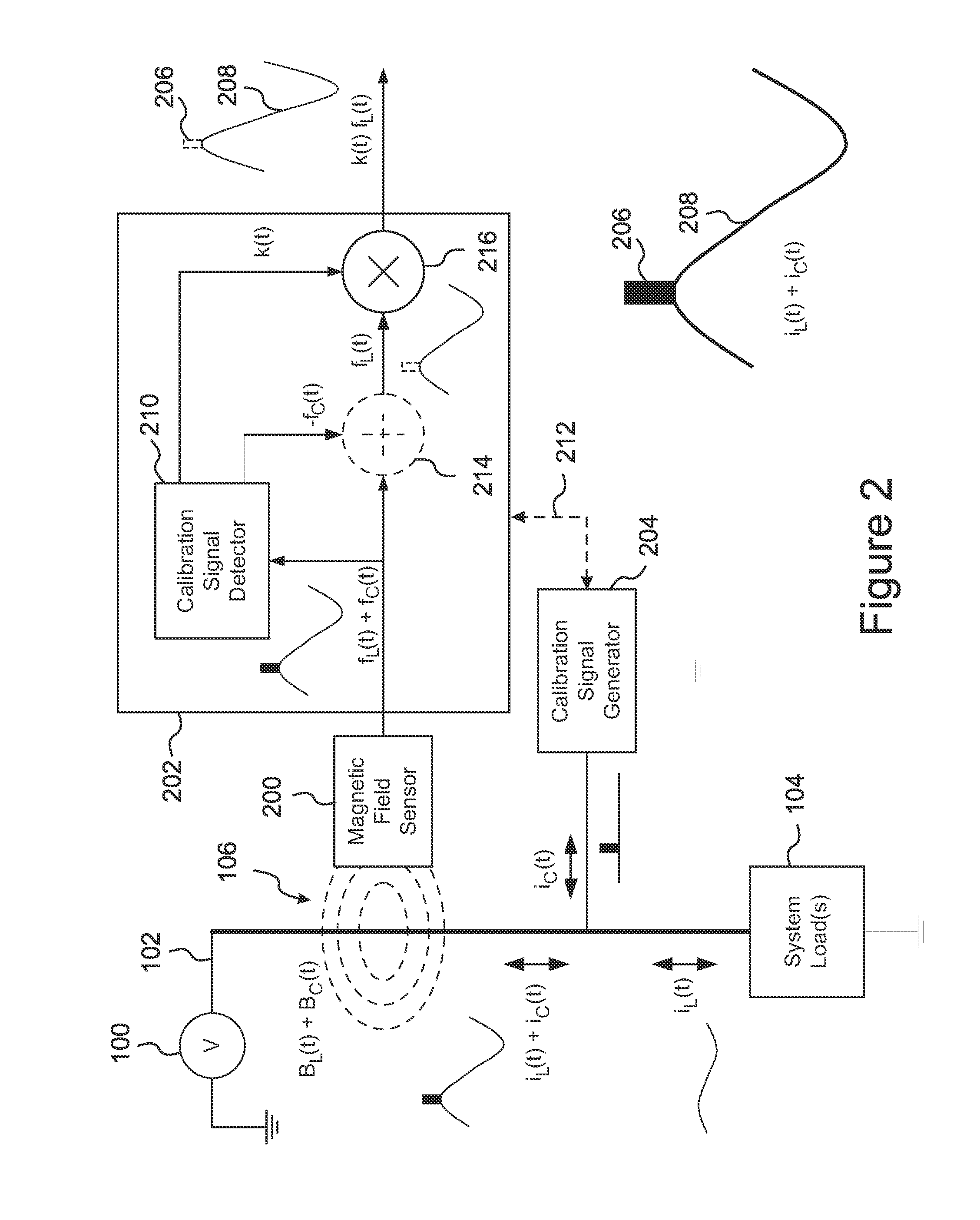Apparatus for calibrated non-invasive measurement of electrical current
a non-invasive, electrical current technology, applied in the direction of dynamo-electric motor meters, instruments, measurement devices, etc., can solve the problems of difficult implementation of loop sensors, periodic calibration, and difficulty in measuring current in conductors, and achieve the effect of enhancing the dynamic rang
- Summary
- Abstract
- Description
- Claims
- Application Information
AI Technical Summary
Benefits of technology
Problems solved by technology
Method used
Image
Examples
Embodiment Construction
[0079]The present invention is a system for accurate, non-invasive measurement and monitoring of electrical current flowing through building wiring, or through any electrical circuit or circuits. With reference to FIG. 2, the system includes a remote current sensor 200, a receiver 202, and a calibration signal generator 204, or “CSG.”
[0080]In embodiments, the sensor 200 is sensitive to the magnetic field generated by current flowing through a conductor. As discussed above with reference to FIG. 1, it is well known in the art that an electrical current flowing through a conductor 102 generates a proportional magnetic field 106 circulating around and orthogonal to the conductor 102. The direction and intensity of the magnetic field 106 is, respectively, dependent on the direction of current flow and the amount of current.
[0081]Devices for non-invasively measuring current in a conductor 102 by measuring the associated magnetic field can be broadly classified into two categories: “loop”...
PUM
 Login to View More
Login to View More Abstract
Description
Claims
Application Information
 Login to View More
Login to View More - R&D
- Intellectual Property
- Life Sciences
- Materials
- Tech Scout
- Unparalleled Data Quality
- Higher Quality Content
- 60% Fewer Hallucinations
Browse by: Latest US Patents, China's latest patents, Technical Efficacy Thesaurus, Application Domain, Technology Topic, Popular Technical Reports.
© 2025 PatSnap. All rights reserved.Legal|Privacy policy|Modern Slavery Act Transparency Statement|Sitemap|About US| Contact US: help@patsnap.com



